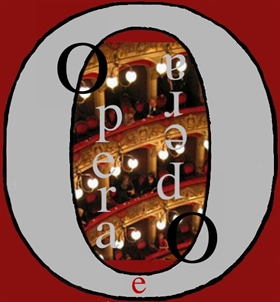Review: Mozart's IDOMENEO in Pistoia at the Manzoni Theater for the 80th Maggio Musicale Fiorentino.
By Lukas Franceschini –
Pistoia, 30 April 2017.
L’80th Maggio Musicale Fiorentino had its first opera production in the beautiful setting of the Manzoni Theater in Pistoia, since the Tuscan city is one of the European Capitals of Culture for 2017.
This regional transfer is to be considered exceptional since the Musical May has always made its productions in the headquarters of the city of Florence. The work on the bill was Idomeneo by Wolfgang Amadeus Mozart, in the staging by Damiano Michieletto created for the Theater an der Wien in 2015.

Mozart's desire to compose a grand opera seria was realized in the summer of 1780 when the commission from the theater intendant of the Elector Kark Theodor for the Munich Carnival arrived. The subject was indicated by the prince himself and was entrusted to Abbot Antonio Varesco. It was based on a mythological drama, with fairy-tale implications, already elaborated previously by other composers. However, in drafting the text, the librettist remained anchored to the Metastasian tradition, pruning the mythological-allegorical background and the conclusion was forged on a happy celebratory ending. For Mozart it was a very complex gestation due to Varesco's reluctance to make changes to the text, and due to the capricious illustrious singers who created endless difficulties. Although conceived according to the rules of the traditional opera of the time, with Idomeneo Mozart produced some revolutionary dramaturgical and musical innovations: he transformed the accompanied recitatives into true instrumental-vocal dialogue, expanded the orchestral system and gave an unusual prominence to the wind instruments. Single score, the richest and perhaps encyclopaedic of the entire eighteenth century, in which the composer offers a relevant mastery as regards the color and strength of the orchestra, the great breadth of the whole work, the melodic line and the art of accompanied recitative.

The main theme of the work it is the relationship between father and son and rightly so Damiano Michieletto during the overture he has a video projected in which Idomeneo, leaving for the war, dresses his very young son in a suit and tie to assume his duties as regent of the kingdom. But the good intentions of a director, often interesting for the conflict not only of generations but also of youthful exuberance, end there. Even within the coherence of a dramaturgical story, the director inserts solutions and theatrical aspects that are certainly not innovative and often over the top. scene, by Paolo Fantin, who on this occasion does not have the same happy hand as on other occasions. All the work takes place on the beach by the sea with real sand. Entrances and exits of the choir and soloists are wrapped in pure white curtains. The scene opens, and remains fixed, on a beach invaded by boots and shoes after the passage of a tsunami, to which are added later piles of furniture, chairs, suitcases, so as to border on a messy waste collection centre. Idamante is already in love with Ilia, who appears on stage in an advanced state of pregnancy, she will give birth in the finale to the notes of the ballet. Elettra is a strong-willed woman and tries to seduce Idomeneo through skimpy, vulgar clothes and probably bought in designer stores or shopping malls, which she wears on stage without any sense, and in the final aria she gets smeared with mud. In the first finale the chorus, a group of beggars, scratch nervously as if struck by scabies. Unlike the libretto, Idomeneo and Elettra die and remain on stage, the funeral farewell with candles also follows for the king. Too many things, too much confusion, little respect for music and drama, usual in the director, but in this case it made the audience bored and perplexed. Carla Teti's costumes were modern and in function of the director's idea, but they leave no trace. Considering that the show was not new, it is legitimate to wonder if there was no other staging solution.
On the podium was Gianluca Capuano, a young conductor with a marked foreign career, who provided a very effective performance as a conductor with well-sustained tempos, a pressing rhythm and precise sound calibration, an eighteenth-century musical narration-dramatic effect. Accomplice a Maggio Orchestra in great shape and a choir, instructed by Lorenzo Fratini, worthy of his fame.

The cast as a whole did not include prominent elements, starting with the disarming protagonist by Michael shame, now the result of a worn-out and often poorly tuned song, an aspect that does not even allow him to unleash some credible arrows in the recitatives. Much better theElectra by Carmela Remigio, a singer of marked musicality and vocal intuition, phrasing and color were relevant even if the satanic laughter of the aria "D'Oreste e d'Ajace" is approximate.
Rachel Kelly, Idamante, she is perfect as a very conventional interpreter in singing in which she finds little vocal suggestions. Ekaterina Sadonnikova is a correct Ilia without emotions, and the “Flattering Zeffiretti” leave no traces of memory.
Excellent Leonardo Cortellazzi for style, incisiveness and refined singing, unfortunately confined to the secondary role of ArbaceI would have preferred him to be the main character. Professional and precise the priest of Neptune by Mirko Guadagnini and the voice of the Oracle by Chanyoung Lee.
Very small audience for a title that is not usual in Italian billboards, applause for the company, a few isolated dissents to the creators of the show who were not present at the final greetings.
© Lukas Franceschini
PHOTOS © Pietro Paolini – Terraproject Contrasto

